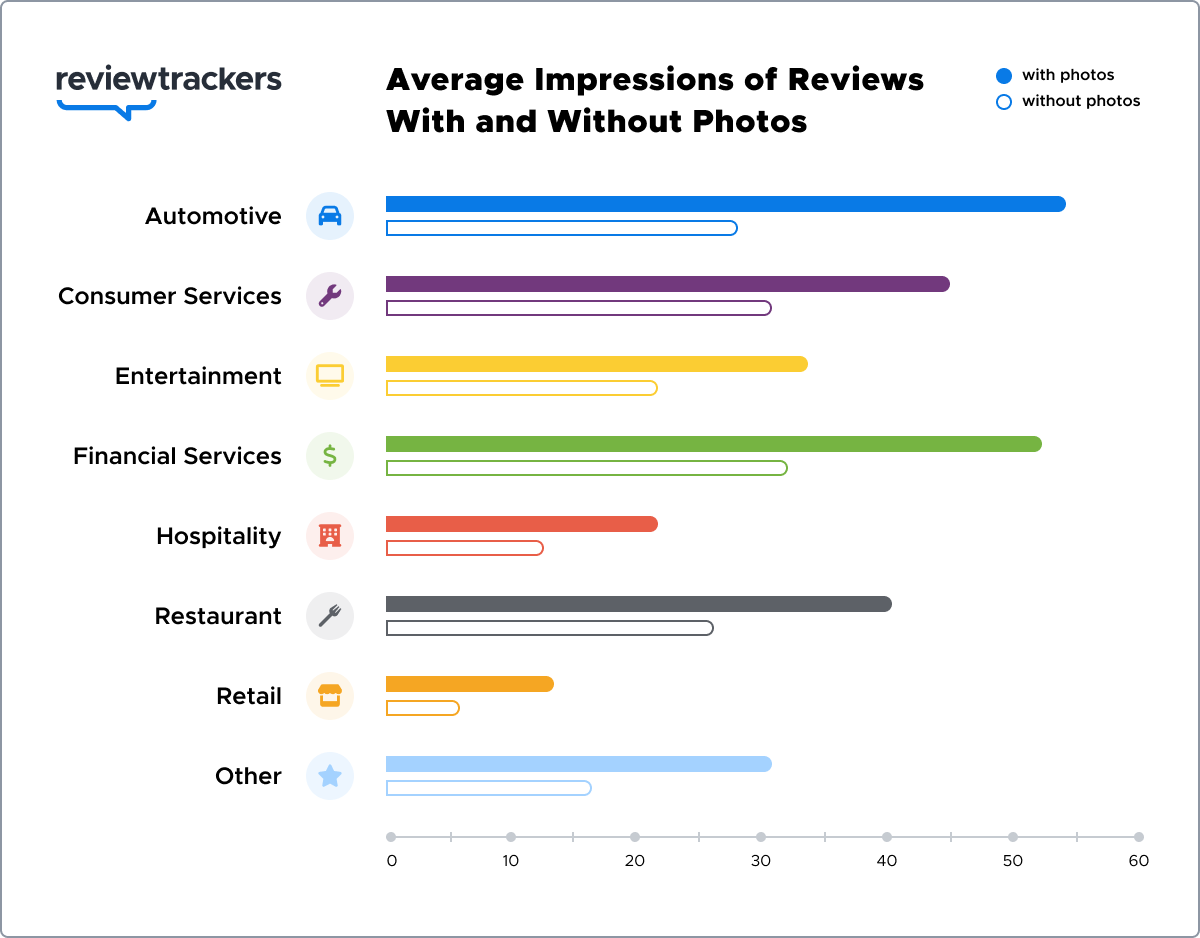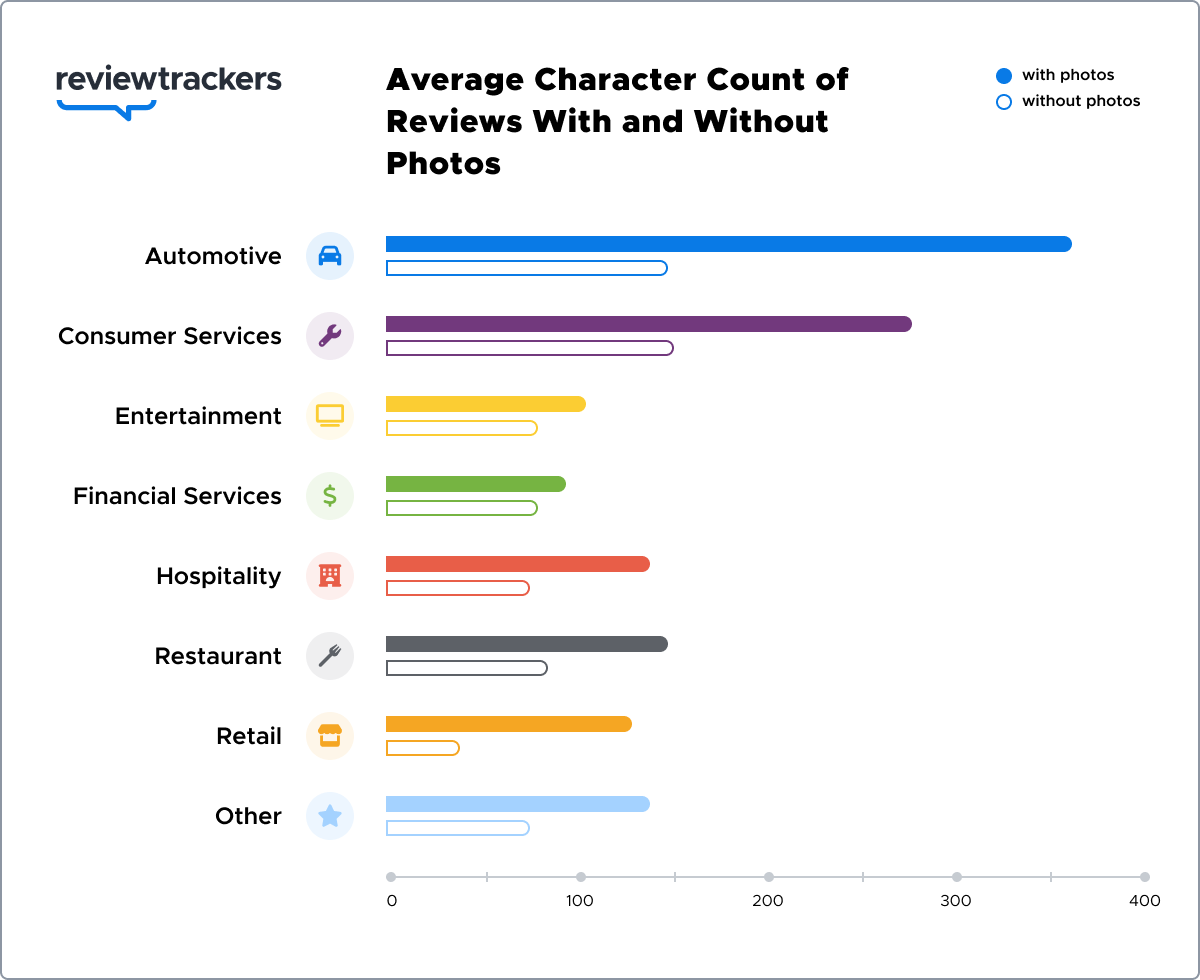Images are more than just a supplement to text; in a digital world, they can be the much-needed context or even the deciding factor. Google data shows that 50% of online shoppers used images to help them make a purchase decision, and Facebook posts with images get 2.3x more engagement than those without photos included. It’s no surprise then, that images are also a valuable asset when it comes to online reviews.
Why Reviews with Photos Matter
Gaining online traction and visibility as a brand can be difficult, especially if you don’t know the relationship between reviews and SEO (search engine optimization). For instance, data shows that a number of reviews with a specific keyword attached to your brand name helps your online ranking on search engines like Google.
Furthermore, factors like character count, which has the potential to include multiple keywords associated with the business, can make it easier for search engines to categorize the brand. This in turn helps the right consumers find you, which brings in even more business and boosts brand visibility on search engines.
With an image, Google and other search engines get another layer of data to better understand the brand and the types of products and/or services offered. More data means more information for the customer, which, in turn, brings them even closer to an informed purchase decision.
To that end, ReviewTrackers gathered anonymized proprietary review and image data from 52 accounts across different industry verticals between January and April 2022 to determine whether or not photos in a review affected the number of impressions it received.

More Impressions, More Influence
In every industry, ReviewTrackers data shows that the impression count of reviews with photos is higher than those of reviews without images. In other words, more people saw those specific reviews, which means a higher chance of potential customers. By using reputation management software, you can use features like the Ask Tool to effectively request that customers add images to their reviews to give your brand more visibility and consumers.
Based on our data, some industries experienced higher visibliities than others. Automotive reviews with photos had 63.4% more impressions and restaurant reviews with photos recorded 42.4% more impressions. These industries are worth noting because of the important role images play in feedback. People want to know that the services these industries provide meet their expectations and the image can make or break a purchase decision. If the food portions are too small or a routine service check-up was well done, people want to share that experience with visuals.
Whereas a traditional review can provide a glimpse of the experience, a photo can provide valuable context that can easily influence a decision. The images provide a real look into the products or services provided that marketing images don’t portray. Authenticity and context are key when it comes to online reviews, and people are using images to make both ordinary purchases and large investments alike.
Telling a Story
Our data also shows that photos tend to have more detailed reviews. Specifically, reviews with photos contain an average of 55.8% more characters than those without. This is important for your brand because context can tell a story, especially when there are visuals involved. Regardless of sentiment, more characters per review can easily give your team even more data on the state of the customer experience. By using customer experience analytics features in reputation management suites like ReviewTrackers, you can begin to highlight keyword trends and sentiment that lead to meaningful changes for both the customer experience and internal operations.

To get these insightful batches of review data, teams can use ReviewTrackers’ reputation management features, like the Ask Tool, to simplify the process of asking for reviews. By encouraging customers to post pictures of their experiences and providing as much detail as possible, brands across every industry get the substantial feedback they need to improve while also giving consumers a crystal clear picture of the experience.
Conclusion
Online reviews continue to thrive and persuade consumers and the data above is an indicator of that trend. An online reputation analysis report shows businesses only get an average of 13.3 reviews per month. By asking for images and more context in every review, you increase the chance that each of those reviews is highly-detailed and contextual. This means more data for your team to improve the customer experience while also providing context to consumers before they make a decision. Engaging in this manner also shows that you care about customer feedback and want the customer to give a “real look” at the offerings you provide.
With the right online reputation management software in place, like ReviewTrackers, creating a review request program with images and managing said feedback can be done with just a few clicks. Over time, your number of reviews with images can grow to attract more potential customers and make it easier (and faster) for them to make a purchase decision.